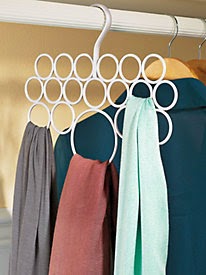It goes without saying that there are
benefits to being organized. You can
find things easily, save money and have peace of mind in a clutter-free
home. But while we know we SHOULD be
organized, for many it’s a challenge.
Most of that stems from the stress of sorting through belongings and
trying to decide what to keep and what to give away or sell.
While the task may seem daunting,
especially if you’ve lived in your home over twenty years, if you stay focused
you’ll make progress. And to make the
process easier, here are some questions to ask yourself while sorting.
1.
Do I have more than one of this? If so, why? Do you need more than one? While you need more than one pair of pants, do
you need more than one lawn mower?
2.
How often do I use this item? Is it something you use on a regular basis, that is,
at least once a month? Or do you dig it
out every few years? If you use
something rarely, like a 50-cup coffee
maker, get rid of it. When you need one
for your party three years from now, borrow one from a friend or rent one.
3. Can this
item be easily replaced? If you get
rid of your ricer today, can you easily find one at the store tomorrow? Of course.
But if you get rid of your shop vac, it’s easy to find one, but
certainly more expensive to replace it.
4.
Do I know what this is? How many times have you gone through junk drawers
only to find something unidentifiable?
If nobody in the house can identify it, get rid of it.
5.
Do I know what this belongs to? You fine screws, lids or keys. You know what it is, but have no idea what
the key opens, or what container the lid belongs to. You don’t need it if you’re not using it.
6.
Do I like this item? Sometimes we inherit furniture
or knick-knacks from deceased family members.
Or we get gifts from friends.
While we accept it gracefully, in our hearts we really don’t like
it. Don’t let things you don’t like take
up precious space in your home. Your
home should only be filled with things you love.
7.
What is the worst that could happen if I get rid of
it?
If you shred your bank statements today, or donate the hand mixer,
what’s the worst that could happen? You
can recreate bank statements. You can
purchase another hand mixer if you find you need it. On the other hand, original legal documents
are not replaceable. Be mindful of what
you donate or shred.
8.
Does it have a place to live in your home? If you don’t have a cabinet or shelf to store it,
then it shouldn’t be in your home. The
floors and tables are not storage units.
If you can’t decide where to put it, then you don’t need it.
While some decisions are easier to make
than others, you’ll find over time that making those decisions will begin to
live in your subconscious. When you’re
shopping, you’ll hear these questions in the back of your mind, helping you
decide whether or not to buy it.







